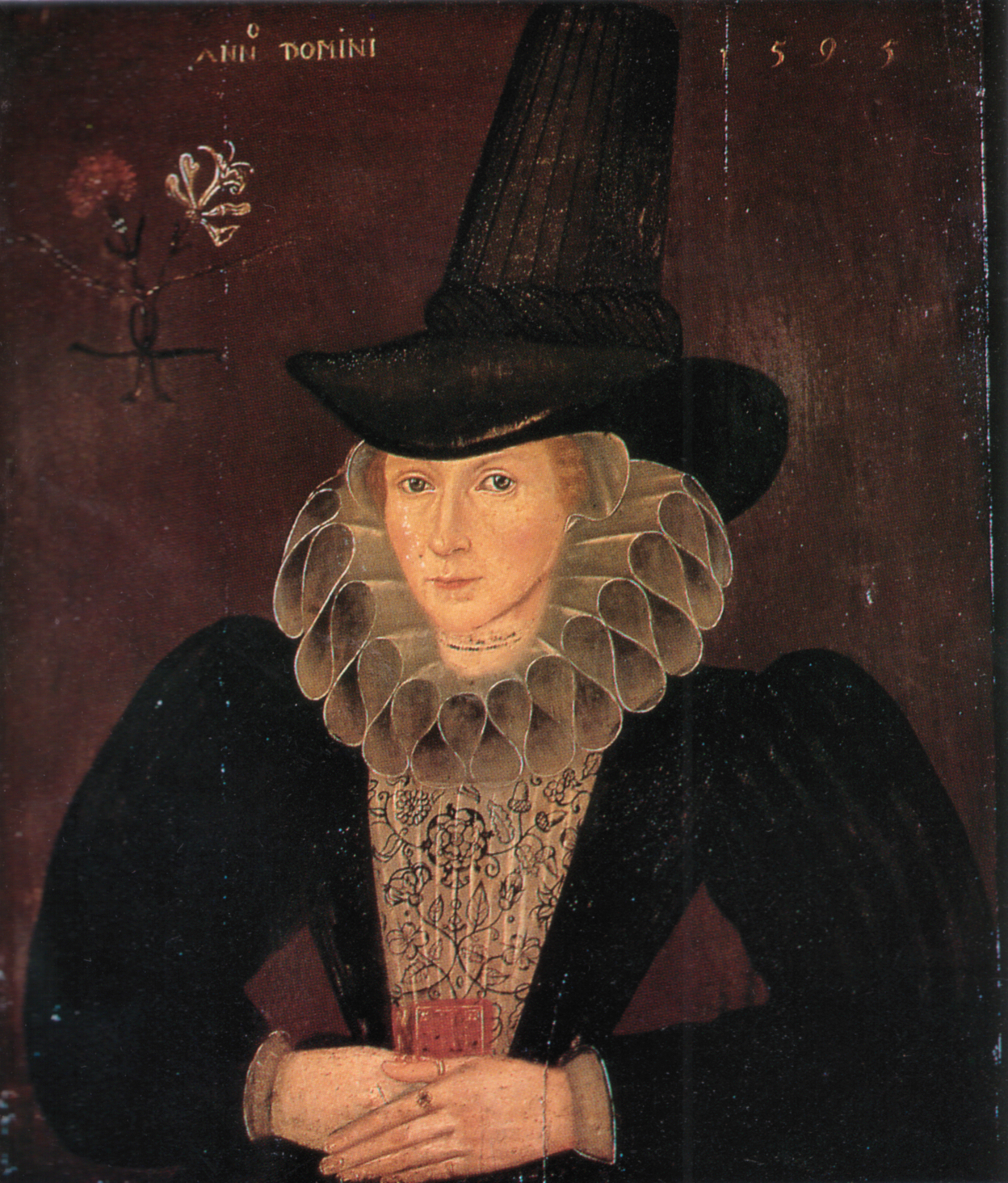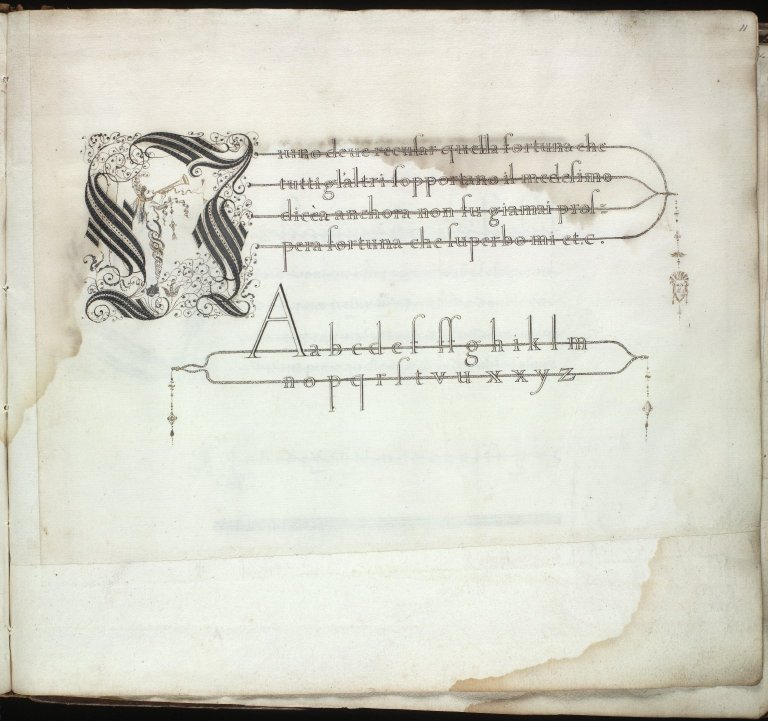 |
| Ester Inglis, Unknown |
Artwork
Ester was a highly skilled calligrapher, some writers have described it as extra-ordinary. She mastered the usual styles of the time along with most of the ornamental styles, including lettera mancina (mirror writing), lettere piacevolle (with curling terminals to ascenders and descenders), lettre pattee with triangular serifs, the trembling line known as lettera rognosa, and lettera tagliata where each line is broken horizontally to give a continuous white line through the letters.


Margaret Macaulay writes the following regarding Esters work: "(she) could work to the minutest scale, fitting eight lines into a vertical measurement of only 18mm, and averaging 23 words to a four-inch line. Metal pens were at an experimental stage, so that goose pens, with crow quills for finer work, were mainly used. The description of Esther as ‘Mistresse of the Golden Pen’ is complimentary only. Gold pens were awarded as prizes for major writing competitions."
 Esters skill didn't end with the written word. She illuminated the pages, sometimes adding tiny self-portraits. She also embroidered the covers for her books. The books were small -- ranging from about 5.5 inches X 6.5 inches to the smallest at 1.25 x 1.75 inches. She was prolific - there are currently 50 of her books surviving.
Esters skill didn't end with the written word. She illuminated the pages, sometimes adding tiny self-portraits. She also embroidered the covers for her books. The books were small -- ranging from about 5.5 inches X 6.5 inches to the smallest at 1.25 x 1.75 inches. She was prolific - there are currently 50 of her books surviving.Career
There are few records of Ester receiving any payment for these works. What is apparent is that they were used as gifts to curry favor with the Court. It also appears that, from time to time they were created and presented with the hope of receiving a payment. Many of her little books are dedicated to members of the Protestant circles in England and Europe, including Elizabeth I; James VI and I; Prince Henry; Prince Charles; Lucy Harington, Countess of Bedford; Robert Cecil, Earl of Salisbury; Sir Anthony Bacon; Prince Maurice of Nassau; Catherine de Parthenay, Duchess of Rohan; and Catherine de Bourbon, sister of Henri IV. It must have been difficult for Ester to spend that much time and effort on a book then turn it over with no assurance of receiving any compensation.
Ester also used her calligraphic skills to assist her husband in his position as Clerk of Passports. She made copies of documents and wrote foreign correspondence. This is where it gets interesting. Some of her small books appear to have supported his involvement with the secret negotiations for the succession of James VI to the English throne. Some scholars of the era go so far as to suggest that Bartholomew used these little gift books as pretext to travel abroad as a spy.
Hummm...exquisite calligrapher, amazing miniaturist, incredible embroiderist, and political reformer...pretty badass, I think!
+++++++++++++++++++++++
Selected Sources
Campbell, Julie D. and Anne R. Larsen, Editors. Early Modern Women and Transnational Communities of Letters
Carney, Jo Eldridge. Renaissance and Reformation, 1500-1620: A Biographical DictionaryMacaulay, Margaret. Mistresse of the Golden Pen. http://textualities.net/margaret-macaulay/mistresse-of-the-golden-pen
No comments:
Post a Comment